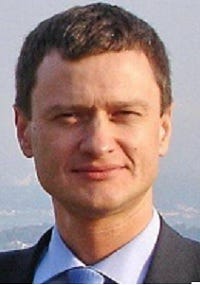Earth Observation Satellites with AI Being Use to Monitor War in Ukraine
AI helps to filter clouds out of images, making data transfer more efficient, and data validation techniques help create an archive that could be useful for prosecuting war crimes.
By John P. Desmond, Editor, AI in Business

The war in Ukraine has brought space-based sensors – which have been making terrestrial images available to the public for close to 20 years – to the forefront.
And now that many of these satellites are employing AI to advance their capability, able to process huge volumes of data at a fraction of the time it used to take, the technology is proving extremely useful for verifying claims and tracking the destruction left by Russian bombing strikes in the war in Ukraine.
“The crisis in Ukraine has really been a catalyst for bringing together … our industry, for how commercial remote sensing and more advanced geospatial intelligence can be applied to a trending event,” stated Tony Frazier, an executive vice president of Maxar Technologies, which builds satellites and provides Earth observation data to customers, in a recent account in National Defense.
Maxar’s sensors, which can see objects at resolutions of 30 centimeters, “really deliver insights to those in need,” he stated. The company has been monitoring events in Ukraine and Belarus day and night at land and at sea.
In another example, BlackSky Technology, which operates its own satellites and integrates data from other spacecraft and sources to provide its customers with intelligence, began looking at the Russian buildup on the border of Ukraine in January. “It really is a new era,” stated J.R. Riordan, chief revenue officer. “The unblinking eye we always talked about 25 years ago, is real today,” he stated.
The company set up an internal unit to help its customers and others who come forward and ask for help from a humanitarian perspective. “We continue doing it today on a 24/7 basis,” he stated in an address at the recent Satellite 2022 conference in Washington, DC.
Also, HawkEye 360, a company that collects radio frequency data, is developing constellations that fly in clusters of three that enable collection of precise, geolocated radio frequency signals in the 50 megahertz- up to 18- gigahertz range, stated John Serafini, CEO of the startup. He did not acknowledge publicly that his company is engaged in the area of Ukraine.
The company has been operating in the classified domain but is now bringing the capability to the unclassified world, he stated. “Part of our value proposition is that the data we produce is shareable,” Serafini stated. “It’s exportable, to be provided to coalition partners on the battlefield.”
Dutch Company Developed Software System to Monitor War in Ukraine from Space
A Dutch AI company has developed an application specifically to monitor the war in Ukraine.
OPT/NET BV of Noord-Holland, which describes itself as building mission-critical AI products for data-driven environments, based on its decades of industry experience, has been developing a new application: UKROPTOSS.
The new platform is based on OPT/NET’s TSAR-AI data analysis solution, for analyzing large volumes of data, according to a recent account in Groundstation Space.TSAR-AI, developed over a number of projects with funding from ESA and the European Union, made it into the third round of the IBM AI for Good XPRIZE competition as well.
For data validation, the UKROPTOSS AI platform gets its primary data feed from the Live Universal Awareness Map website, which contains independently verified and geotagged reports of activities. Liveuamap started with the Russian invasion into Ukraine in 2014 and has evolved into a leading independent global news and information site. It is dedicated to factual reporting of a variety of topics including conflicts, human rights issues, protests, terrorism, weapons deployment, health matters, natural disasters, and weather related stories, among others, from a vast array of sources.
The platform combines on-the-ground sources with detailed and frequently updated satellite data, thus becoming a reliable archive for war crimes investigators. Alleged war crimes, such as intentional attacks on civilian targets, can be validated by comparing reports from sources on the ground with before and after satellite images. This can be used to prove or disprove that military installations were present at the attack site.
“Our goals are purely of humanitarian nature for the recording, documentation, systematization and later analytics of the events in Ukraine, potentially even for prosecution of war crimes, in case we manage to collect evidence of criminal behavior,” stated Taras Matselyukh, OPT/NET cofounder and CEO.
First Earth Observation Satellites with AI Launched in 2020
The first earth observation satellite to demonstrate how onboard AI could improve the efficiency of sending Earth observation back to Earth, PhiSat, was launched in 2020. It was part of the FSSCat mission, winner of the 2017 Copoernicus Masters award, and was proposed by Spain’s Universitat Politècnica de Catalunya and developed by a consortium of European companies and institutes.
Two CubeSat miniature satellites, each about the size of a shoebox, collected the data using state-of-the-art dual microwave and hyperspectral optical instruments. The AI helps to filter out images blocked with clouds, making data transfer to Earth more efficient.
“We have effectively given the instrument its own brain, which processes the data onboard to detect clouds in the images,” stated Marco Esposito, managing director at cosine Remote Sensing, of Leiden, South Holland, Netherlands, the company that led the development of the AI algorithm, according to an account from the European Space Agency. “This not only ensures better quality data, but makes the delivery much more efficient,” he stated.
Read the source articles and information in National Defense, in Groundstation Space and from the European Space Agency.
(Write to the editor here.)



